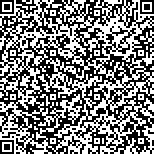|
| 引用本文: | 温仰磊,王友郡,柳加波,赵爽,李冠华,贾佳,夏敦胜.2014.准噶尔盆地南缘黄土磁化率变化规律及影响因素[J].地球环境学报,(2):85-92 |
| WEN Yang-lei,WANG You-jun,LIU Jia-bo,ZHAO Shuang,LI Guan-hua,JIA Jia,XIA Dun-sheng.2014.Magnetic susceptibility variation of loess deposit in the Southern Junggar Basin and its influence factors[J].Journal of Earth Environment,(2):85-92 |
|
| |
|
|
| 本文已被:浏览 3972次 下载 1872次 |

码上扫一扫! |
|
|
| 准噶尔盆地南缘黄土磁化率变化规律及影响因素 |
|
温仰磊,王友郡,柳加波,赵 爽,李冠华,贾 佳,夏敦胜
|
|
兰州大学 西部环境教育部重点实验室,干旱环境与气候变化协同创新中心,兰州 730000
|
|
| 摘要: |
| 准噶尔盆地南缘柏杨河典型风成黄土剖面的岩石磁学与粒度研究结果指示该地区黄土磁
性矿物以亚铁磁性矿物为主,主要载磁矿物为粗粒原生强磁性矿物,同时含有少量细粒磁性矿物,
磁性矿物含量远低于黄土高原黄土。磁性矿物磁晶粒度以假单畴和多畴(PSD/MD)为主,后期
成壤过程对磁性矿物颗粒的改造作用很小。柏杨河黄土磁化率增强机制较为复杂,磁学与粒度
的曲线对比表明风动力强度对含磁性矿物较粗颗粒具有分选作用,是导致磁化率变化的重要因
素,但二者的低相关性又暗示了风动力强度在解释磁化率增强机制中的局限性。古尔班通古特
沙漠在末次间冰期以来的收缩与扩张导致的物源变化可能是影响磁化率变化的又一重要因素。 |
| 关键词: 准噶尔盆地 柏杨河黄土 磁化率 粒度 |
| DOI:10.7515/JEE201402005 |
| CSTR: |
| 分类号:P318;P532 |
基金项目:国家重点基础研究发展规划项目(2010CB950202);国家自然科学基金项目(41130102)
|
|
| Magnetic susceptibility variation of loess deposit in the Southern Junggar Basin and its influence factors |
|
WEN Yang-lei, WANG You-jun, LIU Jia-bo, ZHAO Shuang, LI Guan-hua, JIA Jia, XIA Dun-sheng
|
|
Key Laboratory of Western China's Environmental Systems, Ministry of Education of People's Republic of China,
Collaborative Innovation Centre for Arid Environments and Climate Change, Lanzhou University, Lanzhou 73000, China
|
| Abstract: |
| Rock magnetic parameters and grain sizes were measured and analyzed in a loess section
in the Southern Junggar Basin. The results show that the content of magnetic mineral of the section is
much lower than Loess Plateau of China, and the dominant magnetic mineral is ferromagnetic. Native
strong magnetic mineral is the primary cause of magnetic susceptibility rise. The analysis of grain size
of magnetic minerals indicates that the property of the loess is dominated by PSD/MD magnetite. The
change mechanism of magnetic susceptibility of Xinjiang Loess is complex. Comparison of magnetic
susceptibility curves and grain size curves show that wind is the important reason leading to magnetic
susceptibility changes, but not the only one. The changing of provenance may be the other reason
leading to magnetic susceptibility changes, because the expansion and contraction of Gurbantunggut
Desert would be occur when the climate changes since the last interglacial period. |
| Key words: Junggar Basin Baiyanghe loess magnetic susceptibility grain size |
|
|
|
|